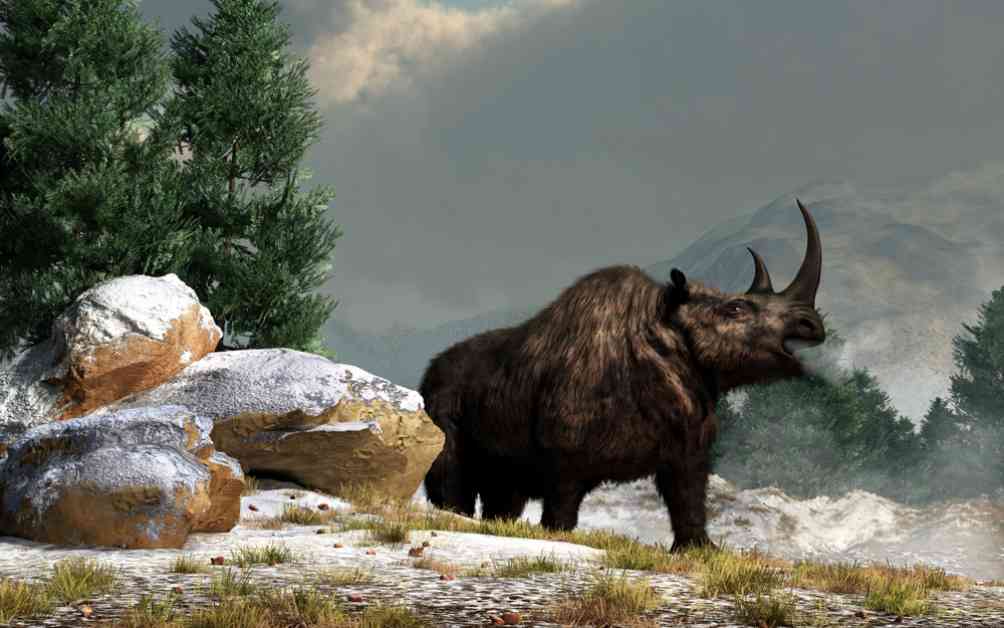The woolly rhinoceros, a majestic creature that once roamed the northern regions of Eurasia, is now one of the most iconic extinct megafauna. These thick-skinned, long-furred beasts lived in the mammoth steppe, a cold-dry grassland biome that existed during the Last Glacial Maximum (LGM). However, approximately 10,000 years ago, the woolly rhinoceros disappeared from the face of the Earth. Scientists have been able to find mummified carcasses and bone fragments of these animals, as well as human cave paintings in Europe and Asia featuring the woolly rhinoceros.
For a long time, scientists were uncertain about the role human beings played in the extinction of the woolly rhino. However, recent research has provided insight into the factors that likely led to the demise of this gigantic herbivore. Eline Lorenzen from the University of Copenhagen, who co-authored the study, stated that they analyzed ecological mechanisms and threats that may have contributed to the decline in woolly rhinoceros populations and their eventual extinction over the 52,000 years leading up to their disappearance. The team used simulations based on fossil records, paleoclimate data, and human presence to model interactions between climate, humans, and woolly rhinos over time and space.
The woolly rhino was believed to have inhabited a wide ecological niche with low population abundance and limited dispersal to new habitats. These factors, combined with cooler temperatures and sustained hunting by humans during the Holocene, trapped the large herbivores in suboptimal environments, leading them towards extinction. The woolly rhinoceros had a diet consisting of forbs and graminoids, with wear patterns on their teeth suggesting they grazed on vegetation in dry-open landscapes. Despite being adapted to cold climates, they preferred habitats with low snow cover, which became scarce as the climate cooled.
As the planet warmed after the last ice age, woolly rhinoceros populations were unable to move to new landscapes in the north of Eurasia, leading to their decline and extinction. The research emphasizes that extinction processes can be complex and gradual, influenced by factors such as genetic diversity, population size, climate, and habitat size. Human activity has also played a significant role in pushing large animals into fragmented and suboptimal habitats, endangering many species of megafauna still in existence today.
In conclusion, the study sheds light on the challenges faced by woolly rhinos in their habitats and the intricate factors that contributed to their extinction. It serves as a reminder of the importance of conservation efforts to protect vulnerable species and preserve biodiversity for future generations.






